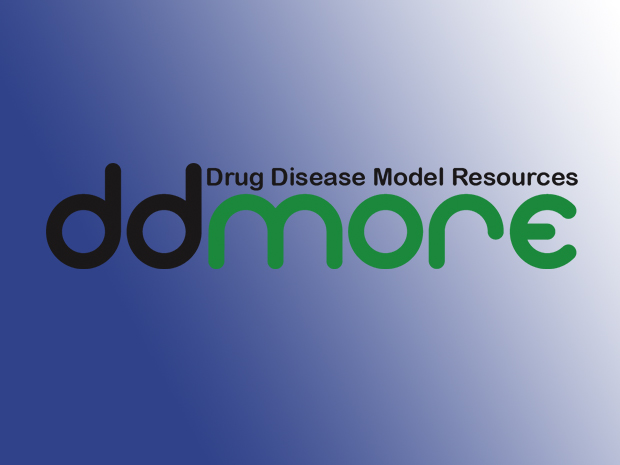
Computational modelling resource
A new repository from the Drug Disease Model Resources (DDMoRe) consortium helps researchers share computational models of disease used in pharmaceutical R&D. This open resource will make it easier for researchers to refine and reuse models of drug action and disease progression.

The Drug Disease Model Resources (DDMoRe) consortium has launched a new repository for computational models of disease used by researchers to describe interactions between drugs and patients. Featuring a flexible format and following a new standard, this public, open-access resource will make it easier for researchers to share and reuse models of drug action and disease progression using their own software.
Model-based drug development is a vital approach to understanding the risks and benefits of a patient taking a particular drug. Pharmaceutical researchers create computational models and simulations to describe and predict drug exposure and response, and use them to analyse experimental data. This provides a basis for informed, quantitative decision-making. But until now, these models could only be used if they fit into one of a few commercial software packages, each of which has compatibility issues. This choice of software has made it complicated for people to share their models and improve upon them.
“The DDMoRe repository is open access, so more people will be able to build on the models and cite the original authors’ work – that means it’s also helping people who make models receive additional credit for their work,” says DDMoRe repository developer Mihai Glonț at EMBL-EBI.
The new repository makes it much easier for modellers to collaborate, so people working in different places can pool their talents to create computer-based methods for predicting the effects of drugs in a range of conditions.
The DDMoRe repository is built on the project’s standards: the Pharmacometrics Markup Language (PharmML) and the Modelling Description Language (MDL). Together with DDMoRe’s unique interoperability framework, these tools allow users to encode their model in a single format that can be converted seamlessly and executed in commonly used software packages.
“This launch of DDMoRe’s public repository is a major milestone in the project,” says Peter Milligan of Pfizer. “We’ve made the infrastructure behind it freely available and General Public Licence-compatible, which makes it easier for organisations to integrate the repository with their own technical environment. What we’re working on now is an enhanced mechanism for capturing even more information about the hosted models, which will make the resource much more comprehensive and the user experience richer.”
The Repository currently showcases a range of ‘proof of concept’ models describing drugs and diseases. Future releases will include safety models and models relevant to diabetes, oncology, central nervous system diseases and infectious diseases. The content in the first version of the DDMoRe repository is fully searchable. Users can host, share and collaborate on improving public and private models, while the full history of the model is preserved.
Future improvements will include faceted browsing and support for the forthcoming Generic Model Qualification Procedure. The repository will connect imminently to the first instance of the DDMoRe Interoperability Framework.
User feedback, shared experiences and suggestions are welcome, to ensure that this public service reflects the needs of the wider modelling community: ddmore.eu/forums.
About DDMoRe
The DDMoRe consortium is a five-year project of the Innovative Medicines Initiative (IMI, www.imi.europa.eu), involving 27 partners from the pharmaceutical industry, small and medium-sized enterprises and academic research organisations. DDMoRe was formed in 2011 to address the need for common tools, languages and standards for informed decision making throughout the drug-discovery pipeline. DDMoRe aims to facilitate modelling and simulation by establishing standards for encoding models and workflows, and for storage and transfer of models and their associated metadata; by developing a fully searchable, public drug and disease model repository encompassing model descriptions, algorithms, code, data, metadata, assumptions, Bayesian priors, and links to references; by developing an open-source interoperability framework to facilitate access to modelling tools; and by developing the Modelling Description Language (MDL).
Support
This work received support from the Innovative Medicines Initiative Joint Undertaking under grant agreement n° 115156, resources of which are composed of financial contributions from the European Union’s Seventh Framework Programme (FP7/2007-2013) and EFPIA companies’ in-kind contribution. The DDMoRe project is financially supported by contributions from academic organisations and SMEs.
This post was originally published on EMBL-EBI News.


